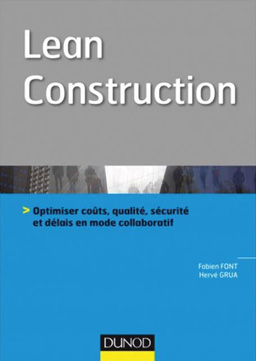Why Lean Construction?
With Lean Construction, we promise to balance the equation: safety, quality, environment, cost and deadlines
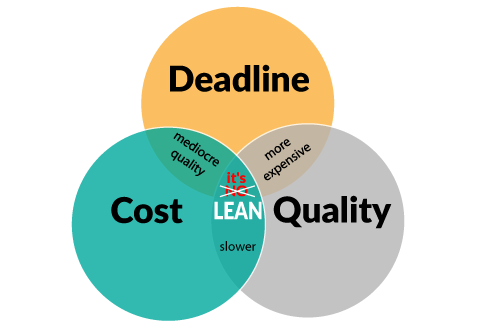
Studies also show that:
- 80% of projects are delivered late
- 10% of the turnover of the construction sector is spent on readdressing quality issues
- 30% of all work hours are avoidable because they produce no tangible result for the customer
- 98% of all mega projects go more than 20% over budget and past the delivery date
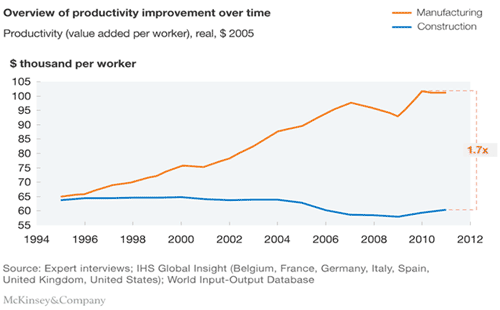
This situation in the operational performance of the sector, is widely visible on projects, and there are many symptoms:
- Arduous working conditions: A worker walks between 7 and 10 km per day
- Stress : A project manager is interrupted every 6 minutes, on the average
All of these elements, which negatively impact the image of a sector, are proof that for several decades, operational performance was not the main concern and that today: “It is an opportunity”. And what if performance increased well-being, and what if quality went hand in hand with short deadlines, and what if productivity and security became a single factor.
Yet despite the context and these observations, it is often difficult to take the first step because the obstacles stemming from paradigms are strong:
- Construction produces prototypes
- "It’s different for me"
- The fear of change
Construction produces prototypes
However, to get around these obstacles, the lean must simply be adapted to each situation (select and adapt the tools to each phase of a project) and manage the change (train, convince, give it meaning, etc.).
In this context, Lean Construction optimizes performance by eliminating waste, both in terms of jobs (see example of improved performance in the installation of bleachers), and in terms of project management, for which controlling lead times is often the main concern (see example of a short lead time on a hospital residence).
It is a matter of managing lost time, the poor use of common workspaces and resources (stocks, tools, etc.) as well as wasted human energy (arduous working conditions and poor management of difficulties which arise).
Beyond waste, Lean Construction strives to improve global performance (SQCD [safety/quality/cost/deadline]), that is to say, a performance which is not targeted on a limited objective.
What is Lean Construction?
The reduction of costs, the quality of the construction, the quality of working conditions, productivity and meeting deadlines are at the heart of this approach which is as rigorous as it is ambitious.
Much more than a simple tool box for improving performance, today, lean construction developed by IMMA is structured like a project management method making it possible to shorten the duration of a project through its collaborative management. The contracting authority and AMO, the architect, consultancy firms, businesses and future users of the building are involved, from the very beginning of the project and throughout its duration, in managing the project and in solving problems as they arise. This methodology radiates through a project at 360°, by allowing all actors (from the labourer to the end clients) to improve their performance, their well-being and the balance in Security - Quality - Environment - Cost & Deadline.
Concretely, lean construction provides an optimized schedule in collaboration with all of the actors of the project, assimilated by all and in which studies are lead to begin construction in a timely manner.
This implies respecting the daily/weekly schedule and managing common work spaces. It makes it possible to seek solutions at the time a problem arises, allows for clear visibility of the end date at all times, the management of logistics and of the handover to the operator.
Lean construction makes it possible, at the individual job level, to involve workers in the continuous improvement of their tasks.
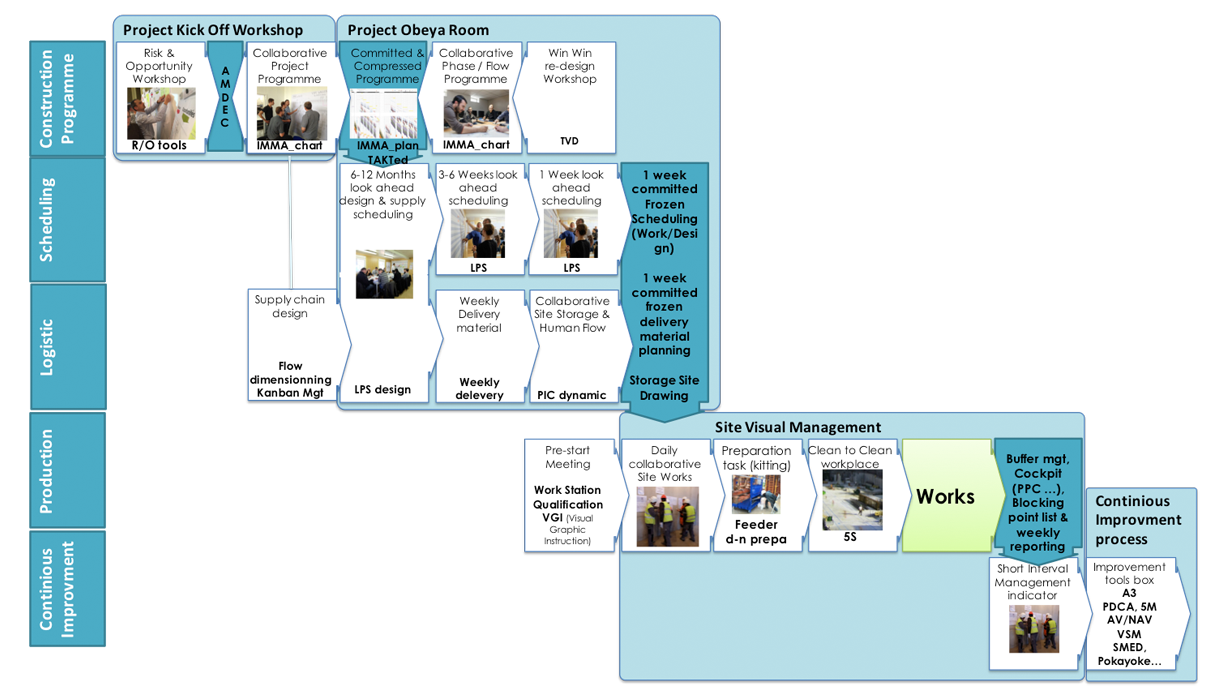
A Lean Construction project differs from a traditional project in this way
LEAN CONSTRUCTION PROJECT
Schedule made and understood by all stakeholders
Optimized schedule
Studies lead in order to start works in a timely manner
Daily schedule produced and combined activity managed
Management of work spaces
The actors look for solutions
Logistics managed and put at the service of the works
Clear visibility of the end date at all times
Handover to the operator managed
TRADITIONNAL PROJECT
Schedule understood by the one who made it
Schedule not optimized by all stakeholders
Studies not lead for the start of works
Daily schedule not controlled (stakeholders are subjected combined-activity work spaces)
No management of work spaces
The actors look for excuses
Logistics of means
No clear visibility of the end date
Handover to the operator not managed with the works team
Implementation
Working with contracting authorities, architects and companies, we intervene in 2 steps
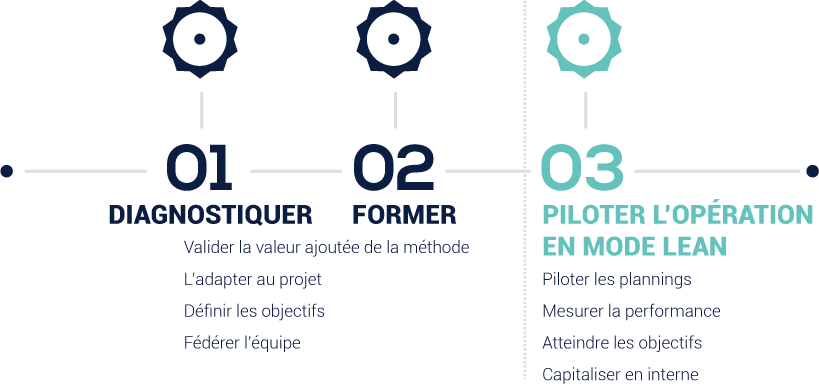
Go further with our Book about Lean Construction
How collaborative work optimize Costs, quality, security and timelines. Editions Dunod (French).
Learn more about how Lean Construction can help improve margins, timelines and security in your construction projects. This book has been co- written by our CEO Fabien Font and Hervé Grua former Industrial Director of KP1 and Plant Director of Groupe Lafarge.
ORDER THE BOOK
